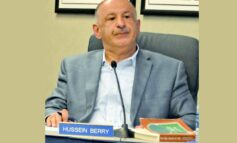
|
| “Confining ourselves to demographic islands perpetuates Hubbard’s racist ideals.” |
Residents and civil rights activists celebrated the removal of Orville Hubbard’s statue from the grounds of Dearborn’s historic City Hall. Hubbard was a White supremacist who advocated for racial segregation. The statue is being relocated to the Dearborn Historical Museum— where it belongs. However, the struggle against the late mayor’s legacy continues.
Removing the statue of a bigoted leader from the heart of a major city in Michigan is a positive development. But more importantly, we must proceed in fighting bigotry in the government, media, police departments and our own communities. In the same way, removing the Confederate flag from the Capitols of southern states would not mean anything without combating social and institutional traditions that disadvantage African Americans.
Hubbard was one of the North’s last prominent segregationists. He wanted to “keep Dearborn clean (White.)” He wanted African Americans to live in their own neighborhoods and boasted about employing tactics to intimidate Black residents, including “a little too good” policing. He opposed a public housing project in the city. He openly used the n-word. During the Detroit riots of 1967, he ordered the police to shoot looters on sight. “I just hate those Black bastards,” he once said.
Despite the apparent institutional defeat of his rationale, Hubbard’s policies are alive and well. Southeast Michigan is highly segregated. Ethnic communities are confined to their individual neighborhoods, which are defined by clear geographical boundaries.
For example, Tireman Avenue separates Dearborn from Detroit. And it also divides the Black and Arab communities in a visible fashion. Similarly, Detroit’s eastern suburbs are predominantly White, while the eastern side of city itself is mostly inhabited by African Americans.
The Arab community in Dearborn and Dearborn Heights is mostly contained in one region. As Arab Americans, we live, eat and socialize in the same places. We often lack the desire to explore who and what is beyond our comfort zone.
While it is understandable that many Arab Americans feel the most secure among others who share their culture and language, restricting our presence to one place, takes away from our ability to discredit the xenophobic myths about our society.
Even within our community, some Lebanese Americans are reluctant to frequent a Yemeni restaurant, and there is a general skepticism of people of different national origins.
Arab American gas station owners in Detroit have been complaining of alleged mistreatment by the city, but the businesses and their employees are not involved socially with their mostly African American customer base.
Living together and joining our efforts for a common good maximizes our productivity. Cooperation should replace isolation.
Integration is proving fruitful in reviving some of Detroit’s neighborhoods, particularly in Southwest Detroit and Warrendale, where African Americans, Caucasians, Latinos and Arabs are residing and working together to improve the quality of life in the city.
Confining ourselves to demographic islands perpetuates Hubbard’s racist ideals, which are still shared by a large segment of Americans.
De facto segregation is not the only racial problem in metro Detroit. Police brutality, judicial bias, unemployment and corporate practices that raise prices in urban areas are still victimizing ethnic communities in Southeast Michigan.
Relocating Hubbard’s statue to the museum is a victory. But combating his legacy must persist.






Leave a Reply